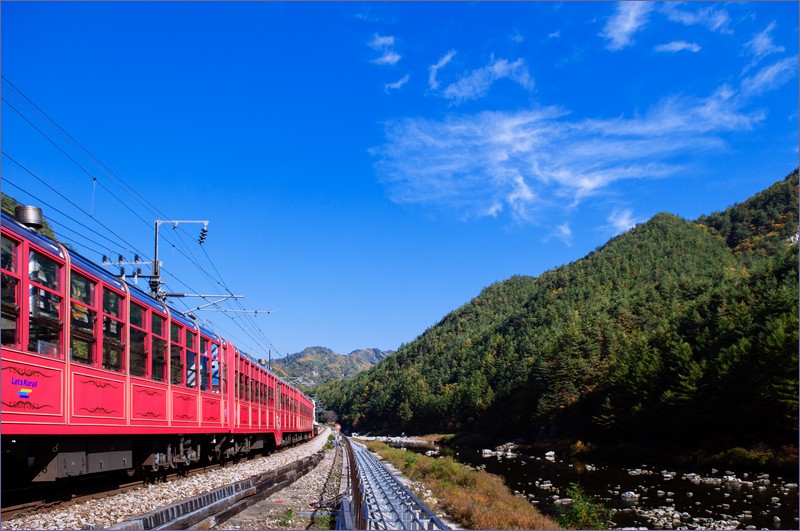Traveling by train is the best way to explore South Korea. The country has an extensive railway network with high-speed lines. Infrastructure is well-maintained. The network consists more than 4,200 km of standard-gauge lines connecting all major mainland cities.
Last updated: 11.01.2024
The first railway on the Korean Peninsula from Incheon to Noryangjin (42 km) was opened on 18 September 1899. It was the first section of the railway line from Incheon to Seoul which was completed next year after the construction of a bridge across the Han river. The line was built to standard gauge.
Earlier was inaugurated tram line between Seodaemun and Dongdaemun – today districts of Seoul (20 May 1899).
In 1905 construction of the railway from Seoul via Pyongyang to Uiju (present day North Korea) was finished.
On 1 January 1905 the railway line from Seoul to Busan was inaugurated. The journey between Seoul and Busan took almost 14 hours. Many railway lines were built by the Japanese in the early 20th century, even before Japanese annexed Korea in 1910.
Between September 14, 1945 and September 7, 1948 railways in Korea were operated by US Army Military Government.
In the second half of the 20th century, the railway declined. Investments in the 1980s allowed the railway to develop and become more popular among passengers.
On 1 April 2004 the first KTX service was introduced.
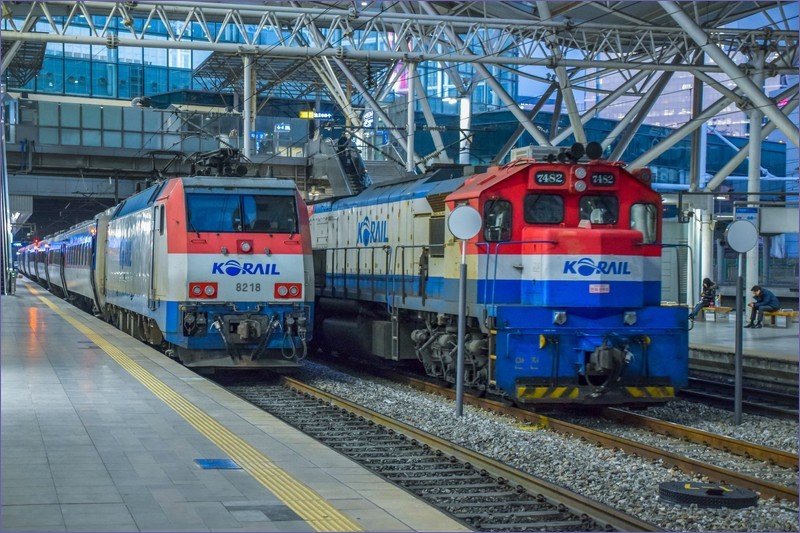
Train travel in South Korea – domestic trains
There are many long-distance trains in South Korea. Long-distance trains are usually fast and comfortable. The main railway line is the Gyeongbu Line from Seoul to Busan – it connects two largest cities in the country. At Daejeon station Honam lines branched from the Gyeongbu Line and ends in Gwangju or Mokpo. KTX trains from Seoul to Busan cover the route in about two and a half hours.
Most of the trains are operated by government-owned Korea Railroad Corporation (Korail). Some of the high-speed trains are operated by SR. Rapid transit trains are operated by various public and private companies. Korea National Railway is responsible for infrastructure.
Timetable and additional information:
www.letskorail.com – Korail official website (in Korean)
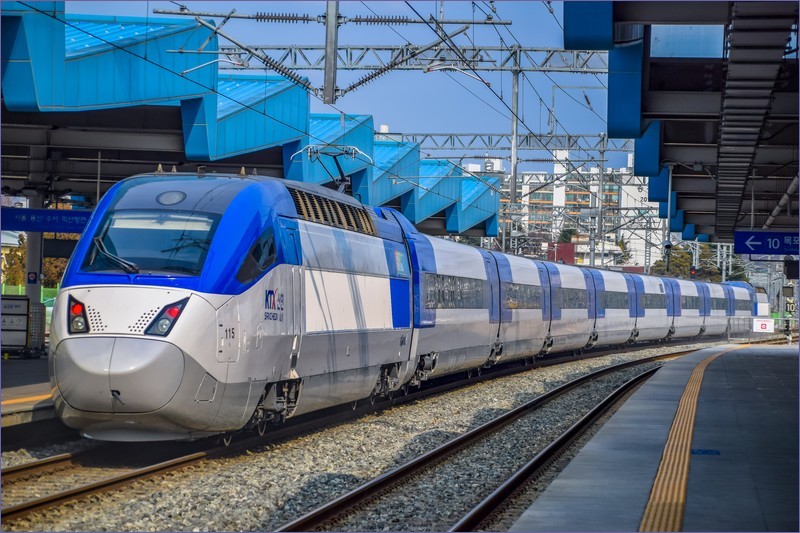
Train travel in South Korea – Korail Pass
Korail has an excellent offer for foreign visitors – Korail Pass. If you are going to stay in South Korea for several days or longer and travel around the country by high-speed trains, Korail Pass is an ideal solution for you. The pass gives you unlimited access to all types of high-speed lines. During each journey you need to have passport and seat reservation with your valid Korail Pass.
Korail Pass is relatively cheap. In most cases, a multi-day pass is cheaper than one train ride in KTX train. You can make up to two seat reservations per day.
There are passes for 3 or 5 consecutive days (in a row) or for 2 or 4 selected days within 10 days. There is a discount for children aged 6 to 12 and for groups of the 2 to 5 passengers with the same itinerary. The pass can only be used by person who bought it. If seat reservations were sold, you can use standee ones.
Korail Pass is not valid on subway and tourist trains. SRT Trains are not included in Korail Pass.
Foreigners living in South Korea for more than six months are ineligible to use a KR Pass, but Korail offers the Happy Rail Pass, which is very similar to the KR Pass, for a slightly higher price.
Official website of Korail Pass – www.letskorail.com
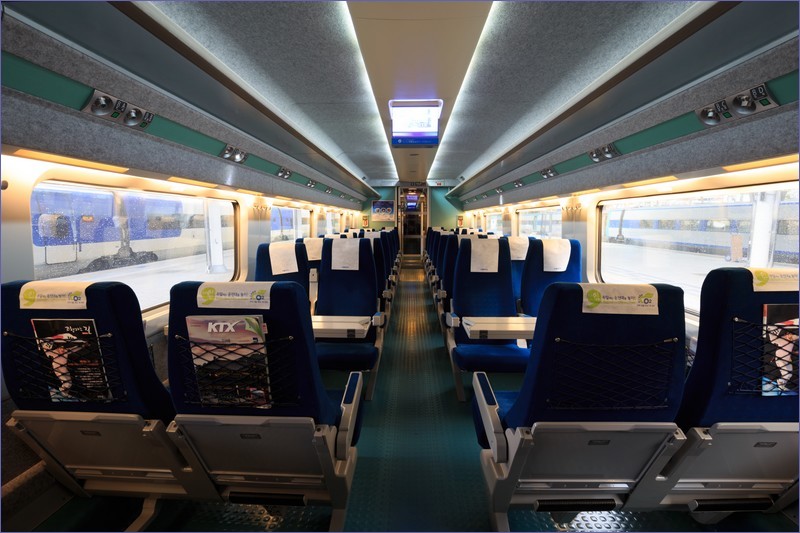
Types of the trains in South Korea:
KTX (Korea Train Express) – Korean bullet trains operated from April 2004. The first generation of the KTX trains was based on Alstom’s TGV and was partly built in Korea. The second generation of the KTX Trains, known as the KTX Sancheon, was domestically developed HSR-350x. third generation KTX train, HEMU-430X, achieved 421.4 km/h in 2013. Trains reach a speed of over 305 km per hour and stops at major stations only. The fastest and most expensive trains in South Korea. KTX have two classes: standard class (seats arranged 2+2 in row) and first class (seats arranged 2+1 in row). Each train can carry 935 passengers, 127 of them in first class.
SRT (Super Rapid Train) – another Korean bullet train. SRT trains operate on two lines from Suseo station in Seoul to Busan and Mokpo from December 2016. They are able to reach a speed of 300 km per hour. Passengers can choose between economy and first class. First class has spacious legroom, reclining seats and power outlet for every seat.
srail.co.kr – official website
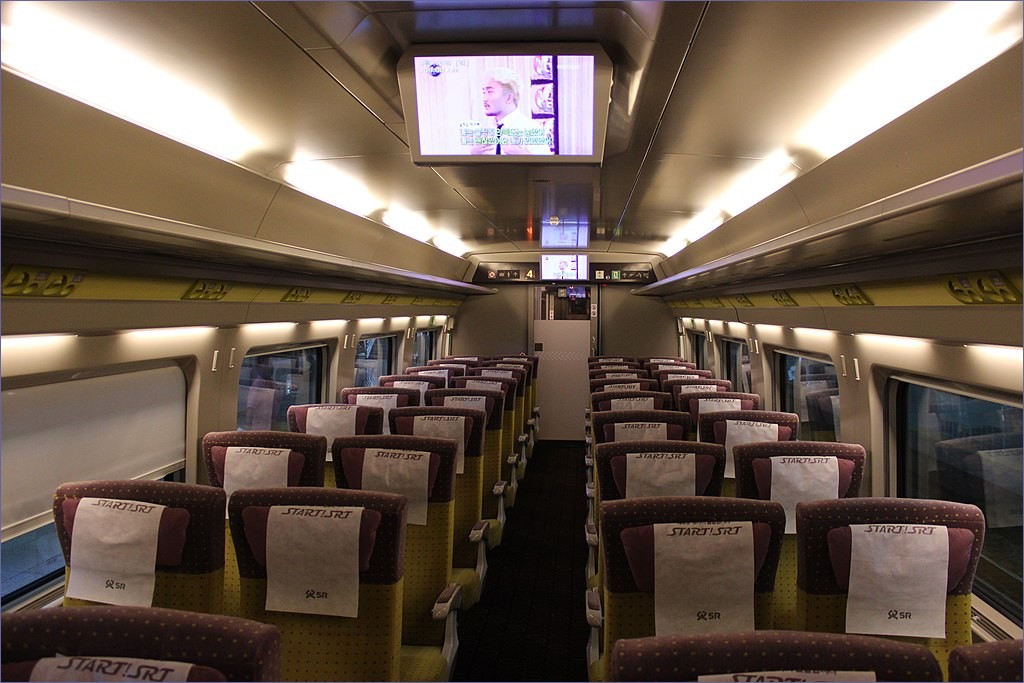
ITX (InterCity train eXpress) – fast trains slower than KTX and SRT trains. ITX trains operate on main railway lines at average speed 150 km per hour. These trains were introduced in 2014 and replaced Saemaeul-ho trains. Each train has capacity 376 passengers. It has only second class. Seats are arranged 2+2 in row.
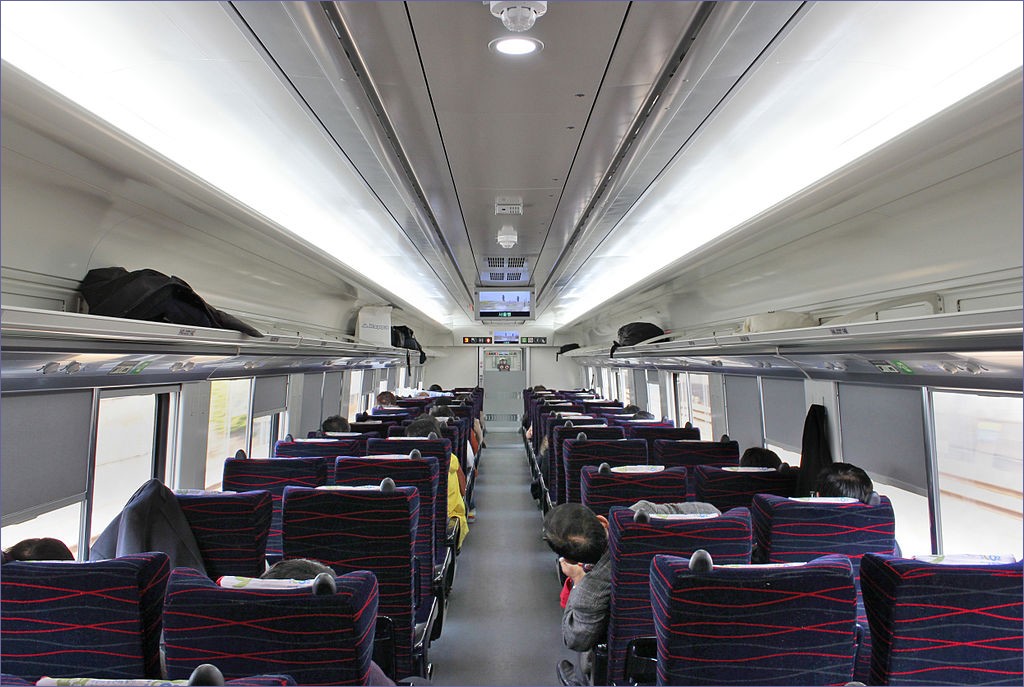
Mugunghwa – long-distance semi-fast trains significantly slower than KTX, SRT and ITX. These trains operate mainly on local railway lines and rural areas. It stops at designated railways stations, but on almost all on the route. Cheapest category of long-distance trains in South Korea. There are electric and diesel multiple units and trains comprised of locomotive and passenger carriages. Some of the trains have been refurbished as subway style. Seat reservation is no required. During high season Mugunghwa trains are overcrowded.
There are also urban and suburban trains in metropolitan areas.
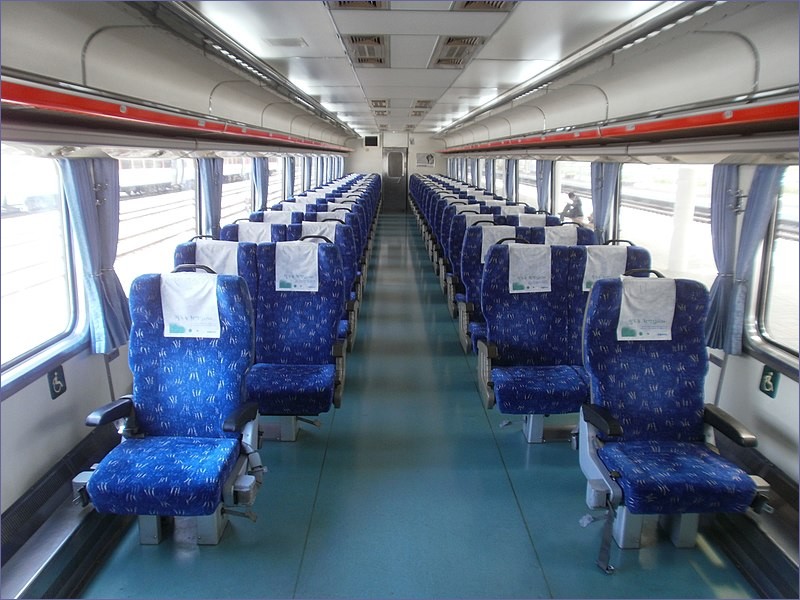
Train travel in South Korea – tourist trains
There are some tourist trains in South Korea operated by Korail.
www.letskorail.com – timetable and additional information (Korail website).
V-Train – tourist train running from April 2013. The train transports tourists through the valleys of Baekdu-daegan, between Buncheon and Cheoram. The train is comprised of a diesel locomotive and three passenger cars in retro style, with a charcoal stove and large windows. Journey time is 65-70 minutes, average speed 30 km/h, there are designated photostops. You can enjoy view of the the most rugged mountain range in Korea – Baekdudaegan Mountain Range.
G-Train – Gold Train, began operations in 2015 and transports tourists from the capital along the coastal areas of the West Sea. Train runs from Yongsan Station in Seoul to Iksan Station in Jeollabuk-do. The train painted in gold has a diesel locomotive and five passenger cars. Some of the cars have heated floors. Cabins are decorated in traditional Korean home style – hanok. There is a car with cafeteria and seats facing the windows. Journey time is 3 hours 23 minutes
A-Train – Jeongseon Arirang Train runs between Cheongnyangni Station in Seoul and Auraji Station in Gangwon-do across picturesque rural areas. The train has four themed cars with large windows and glass walls – each of them is decorated in different colors and themes. Aprroximately journey time is 4 hours.
O-Train – circular route from Seoul through South Korea’s central inland region and back to Seoul. Approximately train travel is 5 hours, lenght of the route is about 257 km. Train runs through the provinces of Chungcheongbuk-do, Gangwon-do, and Gyeongsangbuk-do. The train has four cars with observatory rooms, cafeteria, children’s play area and cabin for families. Probably suspended.
S-Train – South Coast Train runs on two routes:
Seoul – Yeosu Expo (Jeolla Line)
Busan – Gwangju Songjeon (Gyeongjeon Line)
Each of the trip lasts about 5 hours. The trains operate on the same time from different directions and meet at the Hadong station, where passengers can transfers to other train. The train has five cars set up decorated in different themes and with different seat arrangements. The exteriors are coloured in blue and pink. Train runs slowly and passes many interesting places.
DMZ Train – most famous and most popular tourist train in South Korea, but probably suspended. Train ran from Seoul to the stations nearest the Korean Demilitarized Zone. Usually ended at the Dorasan station, located 650 meters from Korean Demilitarized Zone. At the station formerly South and North Korean rail systems connected.
See also:
